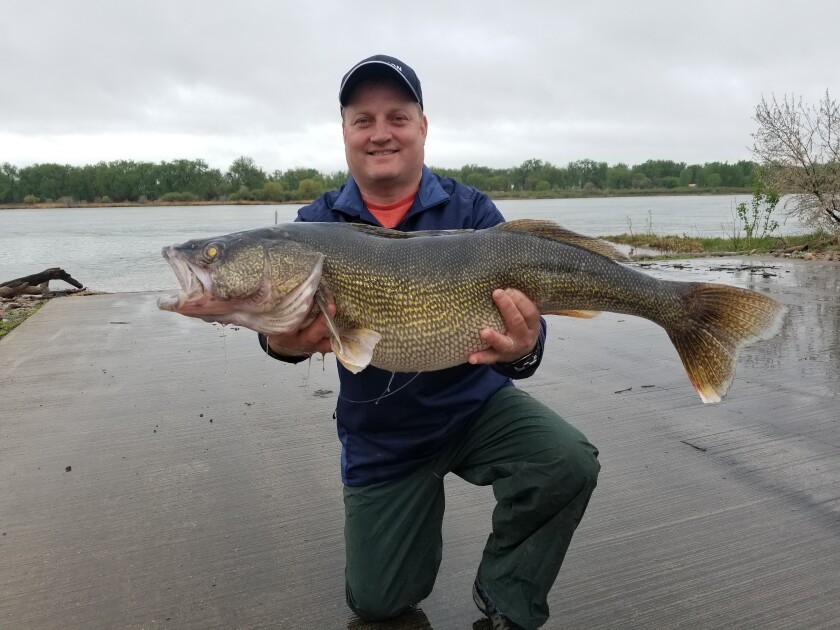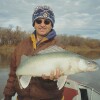Look back on the Minnesota and North Dakota region’s outdoors landscape over the past decade, and it’s difficult to pick a story or issue that stands out above the rest.
Fishing-wise, the years from 2010 through 2019 in North Dakota can be summed up in one word, says Greg Power, fisheries chief for the North Dakota Game and Fish Department in Bismarck -- records.
Record runoff and high water levels produced a record number of fishing waters in the state and record angling opportunities for pike and walleyes, Power said. Following the trend, fishing license sales -- both resident and nonresident -- hit records.
And, unfortunately, a record number of new aquatic nuisance species, including zebra mussels, bighead carp and silver carp, made their unwelcome appearance in North Dakota and continued their spread across Minnesota, as well.
“A record amount of time and money now needs to be spent monitoring our waters, inspecting water-based equipment including boats, enforcing the ANS laws and educating the public,” Power said.
ADVERTISEMENT
In Minnesota, lake sturgeon populations rebounded to the point that the Department of Natural Resources opened a statewide catch-and-release season in addition to the limited harvest opportunities already in place on Lake of the Woods and Rainy River. And fisheries management on Upper and Lower Red lakes moved from successful restoration to successful management.
As in North Dakota, “water, water everywhere” was a recurring theme.
Good or bad, these were major stories, to be sure, but the Story of the Decade since 2010 has to be the continued spread of chronic wasting disease in deer herds in North Dakota and Minnesota.
The Game and Fish Department and Minnesota DNR both are devoting ever-increasing resources to battling the disease that’s fatal to deer, elk and moose and persists indefinitely on the landscape.
At last count, North Dakota had 17 confirmed cases of CWD, all in the south-central and northwest. The Game and Fish Department this fall tested about 3,000 hunter-shot deer in addition to the 30,000 it’s tested since sampling began in 2002.
The tally is even higher in Minnesota, where 73 wild deer in the southeast and north-central parts of the state have tested positive for CWD. The DNR has tested more than 90,000 deer since 2002, a process that accelerated in 2010, when the first positive case in wild deer was detected in Olmsted County.
CWD sucks up more resources in the DNR’s Section of Wildlife than any other issue, according to John Williams, Northwest Region wildlife supervisor for the Minnesota DNR in Bemidji.
“The history of fighting this disease is very bad for us and all the agencies throughout the nation,” Williams said. “We never wanted to see it on our turf, but it’s here.”
ADVERTISEMENT
In an effort to limit the spread of CWD, Minnesota and North Dakota both have implemented restrictions on moving whole carcasses of deer, elk or moose across state lines and outside of infected areas, allowing only quarters of meat with no head or spinal column attached.
In addition, North Dakota has imposed baiting bans in areas where CWD has been found, and Minnesota has implemented feeding restrictions in addition to statewide baiting bans already in place.
“We’re putting everything we can towards it, and there’s a lot of fatigue in the department in the Section of Wildlife staff right now because of it, but we’re giving it our best,” Williams said. “I think the bottom line of this thing is when it’s all said and done, wherever that’s lined up, nobody is going to be able to say the DNR did not do everything in its possible power to prevent this disease as well as keep it from spreading.”
Other top 10 stories or issues of the past decade, in no particular order, are as follows:
2. Record-book elk
In December 2010, Ryan Muirhead of Roseau, Minn., was driving a road less traveled in Kittson County when he and a couple of buddies came across a massive bull elk lying on its back with its antlers mired 8 to 10 inches into muddy ground that wasn’t yet frozen.

Muirhead and others were able to free the massive bull, but it died two days later. The 6x7 rack had nontypical points and scored 462 2/8 inches after the mandatory 60-day drying period, making it the No. 4-ranked nontypical bull in the world under the Boone and Crockett scoring system.
ADVERTISEMENT
3. North Dakota state record walleye
A record that had stood since 1959 was broken in May 2018, when Neal Leier of Bismarck landed a walleye weighing 15 pounds, 13 ounces and measuring 32½ inches from the Missouri River in Bismarck, besting the old record of 15 pounds, 12 ounces.

The record appeared to be broken a year later, when Tom Volk of Lincoln, N.D., caught a 16-pound, 9-ounce walleye from the Heart River, a Missouri River tributary, but the catch later was disqualified when Game and Fish authorities determined the walleye had been snagged.
4. Palsburg Fire in Beltrami Island State Forest.
A fire that broke out in April 2015 during dry, windy conditions in Beltrami Island State Forest burned more than 4,500 acres before it was brought under control. It later was determined that the “Palsburg Fire,” as it was called, started in a slash pile DNR foresters had lit in November 2014 and thought to be extinguished before wind reignited embers smoldering underground.
5. Clean Water, Lands and Outdoor Heritage Amendment soundly defeated
Conservation groups in North Dakota tried to secure dedicated funding for the outdoors with the Clean Water, Lands and Outdoor Heritage Amendment, first with a botched petition drive in 2012 and then a successful petition in 2014. The measure would have dedicated a small portion of the oil extraction tax revenues to clean water, wildlife and parks for the next 25 years, but opponents succeeded in blowing it out of the water on Election Day 2014, when it went down to overwhelming defeat by a margin of 79.4% to 20.6%.
6. On again/off again wolf season
The Minnesota DNR in November 2012 launched its first managed wolf season and hunters shot 147 wolves during the early season, 53 short of the 200-wolf quota. Seasons continued until December 2014, when a federal judge siding with wolf advocacy groups returned the species to federal protection, where it remains to this day.
7. Wolverine wanders into North Dakota
The first wolverine since the late 1800s was confirmed in North Dakota after a ranch hand shot the animal in late April 2016 in McKenzie County. Further study showed the wolverine had a radiotransmitter implanted in 2008 near Yellowstone National Park in Wyoming.
ADVERTISEMENT
8. Loss of grassland/wildlife habitat
The last decade has really exposed the benefits the Conservation Reserve Program provided to wildlife, says Jeb Williams, wildlife chief for the North Dakota Game and Fish Department in Bismarck. In 2007, there was approximately 3.2 million acres of CRP spread out across the state, compared with closer to 1.2 million acres today. The grassland cover provided by CRP provides exceptional wildlife habitat for many species, but most notably pheasants and white-tailed deer. Not surprisingly, those are the two species that have struggled the most with the loss of CRP acres, Williams said. Game and Fish has worked with many partners trying to help minimize the loss of wildlife habitat, but replicating CRP is not feasible, Williams said.
9. Continued moose expansion in North Dakota
For three consecutive years, the North Dakota Game and Fish Department has issued a record number of moose licenses since the inaugural season in 1977. The expansion is especially notable in north-central and northwest North Dakota, where moose are leaving the more traditional wooded habitat of the Turtle Mountains and thriving on the prairie.
10. Continued spread of zebra mussels
Almost weekly, it seems, a new Minnesota lake is reported as infested with zebra mussels, invasive mollusks that have wide-ranging ecological impacts that include disrupting the bottom of the food chain.

Zebra mussels now are well-established in the Red River and this past summer were confirmed in North Dakota’s Lake Ashtabula. Larval zebra mussels in the past year also have been found in Red Lake and Lake of the Woods, developments that, while disappointing, are not surprising.
(Dokken reports on outdoors for the Forum News Service. Call him at (701) 780-1148, (800) 477-6572 ext. 1148 or send email to bdokken@gfherald.com.)
ADVERTISEMENT







